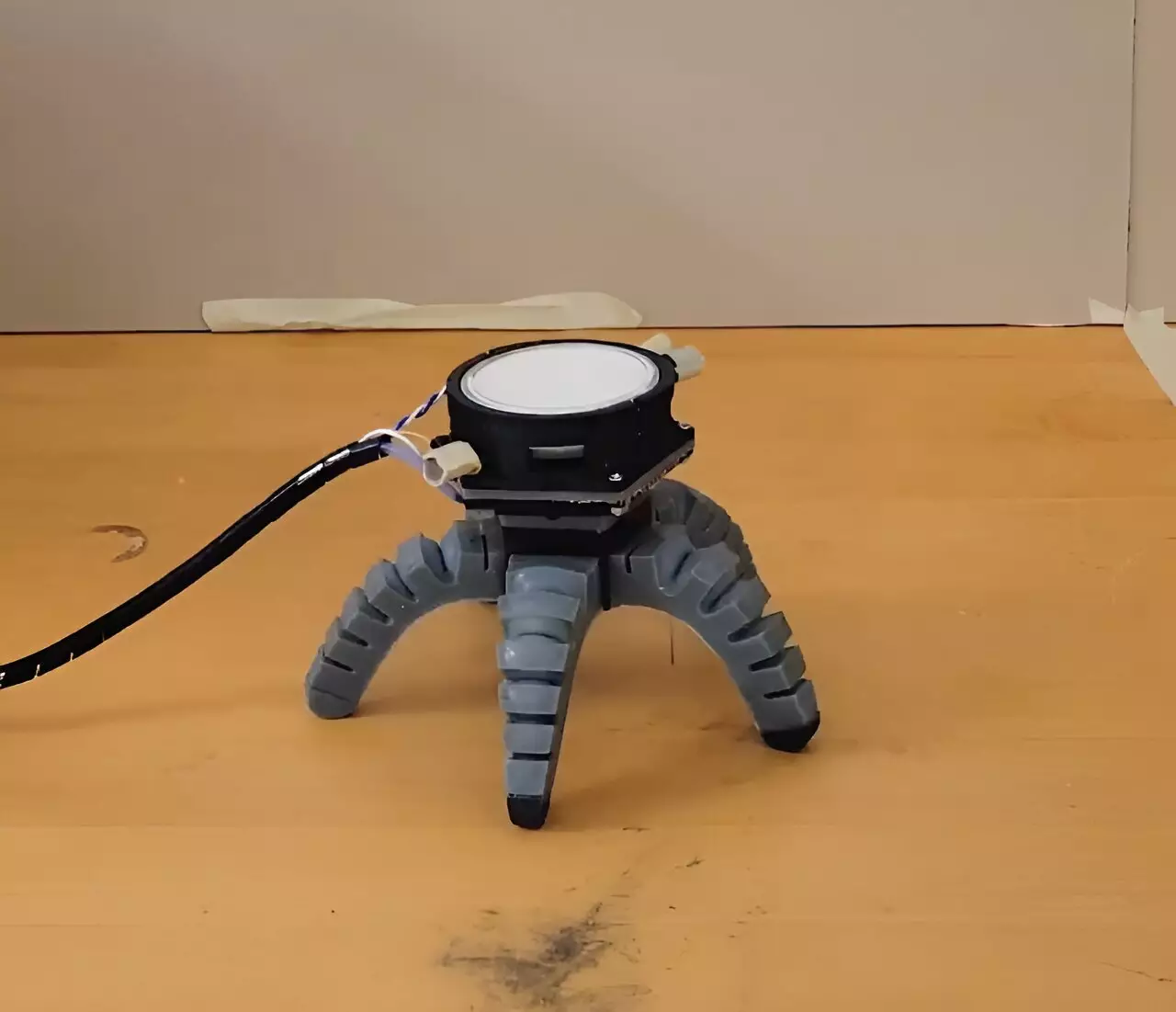In an inspiring intersection of biology and engineering, researchers at Cornell University have cultivated a remarkable approach to robotics by incorporating mushroom mycelium into their designs. This innovation, combining organic systems with mechanical constructs, introduces a transformative concept in biohybrid robotics. Unlike conventional robots that largely rely on synthetic materials and systems, these new creations utilize the mycelial networks found in nature, enabling them to respond dynamically to environmental cues. The research, spearheaded by lead author Anand Mishra and published in *Science Robotics*, opens the door for future robots capable of more nuanced interactions with their surroundings than traditional machines offer.
The essence of this research lies in the ability of fungi to convey electrical signals, which can be harnessed to control robotic functions. By directly integrating mycelia into a robot’s electronic framework, researchers discovered an innovative method for achieving sensorimotor control. This could revolutionize the way robots perceive and interact with their environments—moving beyond passive sensor feedback to more adaptable and intuitive responses.
One of the critical advantages of utilizing mycelia in robotic systems comes from their inherent resilience and adaptability. Unlike synthetic materials that are often limited by harsh environmental conditions, mycelia can thrive in varied settings, making them well-suited for applications in unpredictable environments. They possess the ability to sense a multitude of chemical and biological inputs, paralleling the complex responsiveness typically witnessed in living organisms. Traditional sensors are typically designed for singular functions; however, mycelia can react to an array of stimuli, allowing biohybrid robots to navigate and adapt to unforeseen circumstances effectively.
Mishra’s work elaborates on how biological systems, with their built-in mechanisms for environmental sensing, can supplement the functionalities of robots in transformative ways. The potential applications are vast; for instance, robots that monitor agricultural conditions might use mycelium to detect soil health indicators and optimize resource application, leading to more sustainable farming practices and reduced environmental impacts.
Creating a biohybrid robot is no simple task. It requires a multidisciplinary skill set that crosses boundaries between mechanical engineering, electronic systems, mycology (the study of fungi), and neurobiology. Mishra emphasizes the collaborative nature of the research, involving experts from diverse fields to address the unique challenges posed by integrating living organisms with technology.
Through his collaboration with Kathie Hodge, a mycology expert, Mishra learned to cultivate uncontaminated mycelial cultures—an essential step since contamination can undermine the entire experimental setup. Moreover, insights from Bruce Johnson in neurobiology helped establish methods for recording electrical signals from mycelia, showcasing the level of integration required across various scientific disciplines to push the boundaries of robotics.
Mishra and his team conducted a series of experiments with two distinct biohybrid robots: a soft-bodied robot mimicking a spider and a wheeled bot. These robots were tested under different conditions to explore their interactive capabilities. The first experiment utilized the innate electrical activity of mycelia, allowing the robots to operate based solely on the mycelial signals—an elegant demonstration of responsive behavior derived from fungal control.
In subsequent tests, the researchers employed ultraviolet light to manipulate the robots’ gaits, with the mycelium adjusting its responses based on external stimuli. This adaptability showcases an exciting frontier in robotics—one where systems rely on biological inputs to modulate their actions intelligently. The progression of experiments also revealed the potential for researchers to override natural mycelial signals, illustrating the dual control possible in these biohybrid robots.
The implications of this research extend well beyond the realm of robotics alone. Mishra articulates the project’s philosophy, acknowledging that understanding the signals from living systems can provide valuable insights into their health and environmental conditions. The signals generated by mycelia can illuminate stress factors affecting the fungal networks, allowing researchers to visualize these underlying biological processes through the robots’ responses.
Conclusively, the convergence of fungi and robotics fosters not just a new type of machine but a deeper understanding of how living organisms interact with technology. As discoveries like these unfold, they hold significant promise for the future of environmental monitoring, precision agriculture, and even developments in ecological sustainability, redefining what the next generation of robots could ultimately become. This pioneering work invites further exploration into the potential of biomimicry and collaborative robotics that mirror and respect the complex networks of life surrounding us.

